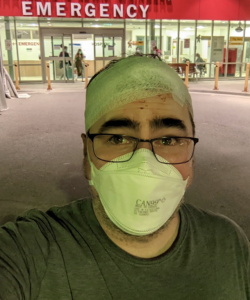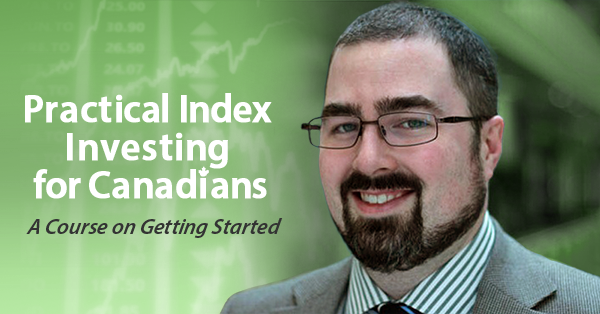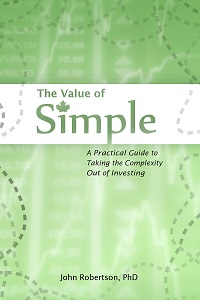A Rambling Tale on Luxury Goods
September 30th, 2024 by PotatoWhile browsing the web, I got served an ad for a fancy non-stick frying pan. It was a slick ad, with a lot of good-sounding reasons for why their claims might be plausible. They listed feature after feature, but I was kind of Jerry-McGuire-face going “you had me at a non-stick frying pan that can go in the dishwasher.” My current set of Teflon-coated frying pans are nearing the end of their life, and I hated my brief experiment with seasoning a cast iron pan, so I’m actually in the market for a good frying pan.
Of course, I’m not familiar with the technology existing for a non-stick food-safe coating that can go in the dishwasher (sure, Teflon says you can, but most sources I’ve seen suggest that even if it doesn’t instantly kill the coating, it reduces the life), so I went hunting for reviews.
It was featured on a “best and worst kitchen gadgets of the year” video from a reputable source… and it was one of the worst. They just slagged it as absolute garbage: eggs stuck to it almost immediately, even when they treat it as carefully as their Teflon pans (one of the selling features was that it was tough enough for metal utensils). It tests so bad they think they must have got a defective pan and go buy another one, and even with hand washing it starts disintegrating after 50 uses according to another review. The poor old lady in the video is visibly shook by how bad this pan is. And it’s marketed as super up-scale, and so it’s costly — but you’d be better off just buying the 10 cheap traditional non-stick pans it would cost and enjoying the 20-30 years of non-stick cooking they would provide instead.
Anyway, the rest of that video is the best gadgets, and I stuck around to see what that was. And it was a soft-sided cooler bag, which I also happen to be in the market for — on our road trip out east, I had resorted to duct-taping my old one together to squeeze one more year out of it.
The video goes over what makes a good cooler bag: a nice, flat lid (some messenger-bag styles have tented tops that waste space and make it hard to get stuff out). Having side handles is a nice perk, as you can lift it easier and hold it close to your body when it’s full and heavy (and I know my old one, which only had a shoulder strap, was a pain that way). They talk about the foam (closed cell insulates better), some other features to help keep things cold that their top pick has, and it’s doing a wonderful job of selling me.
This cooler bag checks all the boxes for them, for me, and as a bonus they say in their testing that when loaded up with ice and drinks, it was still cold 3 days later. I tell you, I’ve never needed a cooler bag to stay cold that long, but it sounds like a nice-to-have.
So I’m sold, and I go to actually shop for one. This thing is FOUR HUNDRED AND TEN CANADIAN LOONIES. For a medium-sized, soft-sized cooler bag.
I liked my old cooler bag (it had over half of the different features they mentioned), and use it in a lot of cases where I’m driving somewhere with cold food (road trips, trips to the ice cream store, even sometimes grocery shopping on a hot summer day), and I got a lot of years of use out of it (…perhaps one too many, given the duct tape this year). So maybe investing in a decent quality new one is not the worst idea.
While I haven’t been shopping for cooler bags yet and don’t know what they should cost, $410 was so far beyond my thought of what it should cost that my brain broke a little.
Anyway, while I might invest in a decent-quality cooler bag in the near future, I won’t be shelling out four hundred dollars for one any time soon.
But that got me thinking about luxury goods. There are people out there who can and will pay for nice things — certainly more than I would. Granted, that’s not a high bar as I’m a) a public servant b) who spent a decade in grad school/research and c) who is also by inclination cheap and writes a finance blog.
Still, there are people who would pay $410 for a cooler bag either because they legitimately needed it to stay cold for 3 days or wanted the best on the market and like having high-quality things. I know even in my own family that that happens — shortly after I moved out I got a set of pretty decent knives complete with knife block for likely something in the $300 range (adjusted to today’s dollars). My dad gave me some Japanese knives that are that much each.
Looking back in history, I used to have a rather unique side business where I would teach people how to invest. There really weren’t any other resources out there like what I could offer, so it made sense to me as a business model. Then after doing it for a few years I saw mostly the same sets of questions and stumbling blocks, and wrote The Value of Simple that answered most of them. I thought I was putting myself out of a job, but I actually got busier — more people found me, and had questions beyond what the book was providing in some cases, but in a lot of cases they just wanted a live person to teach it to them and be there to answer any questions about how ETFs worked, and were willing to pay consulting rates for the service.
That (and spite, we mustn’t forget spite) led me to creating the Practical Index Investing for Canadians course — more content, more questions pre-answered, and a mechanism to ask any additional questions, all at a cost of less than 3 hours of my one-on-one time. It seemed like a win-win and I directed any future clients there, shut down the site advertising my education services, and left it at that.
But now I wonder… I’m not exactly rolling in free time these days, but there are likely people out there who are willing to pay for one-on-one or small group live seminars, just for the premium experience of getting live instruction. Should I hang the shingle back up?
Are there other good ideas that I’ve dumped too soon because I thought there was no way someone would pay what it would cost to deliver? (An example that pops into mind is the mission binder project — I scrapped that one in large part because it was to help with disaster-preparedness and I was working on it in late 2019/early 2020 and whoops a major global disaster kind of stole all the thunder and made the point better than I ever could about how nice it is to have an emergency fund. Anyway, in addition to a traditional book one thought was to make up actual fill-in-the-blanks binders but those would be have to be $100 just to make up the materials and shipping costs).





 Questrade: use QPass 356624159378948
Questrade: use QPass 356624159378948 Passiv is a tool that can connect to your Questrade account and make it easier to track and rebalance your portfolio, including the ability to make one-click trades.
Passiv is a tool that can connect to your Questrade account and make it easier to track and rebalance your portfolio, including the ability to make one-click trades.